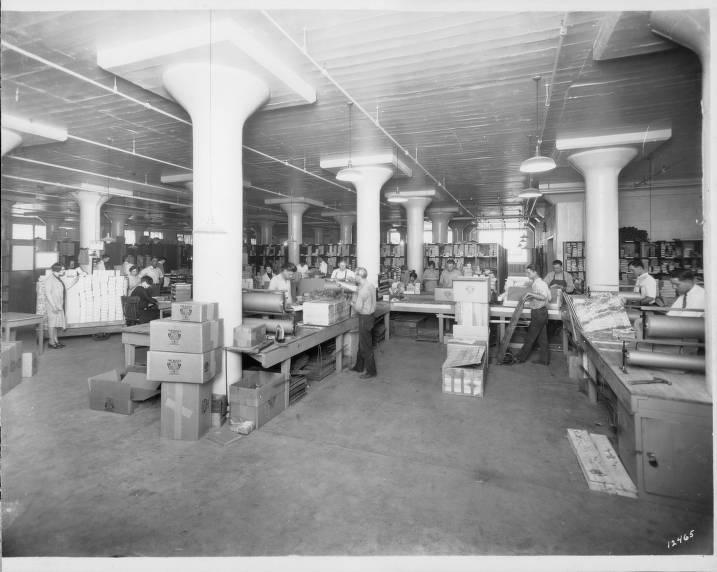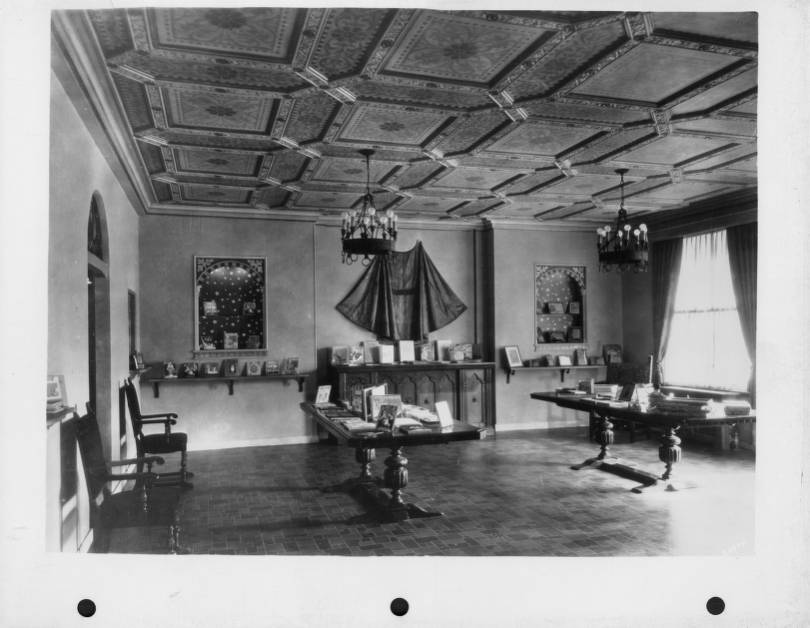The Buzza Card Legacy: How Minneapolis Shaped American Greeting Card Design
Learn how a Minneapolis greeting card company shaped American holiday print design and left a lasting legacy in the world of print and creativity.

Welcome to the first in a new series where we explore the wider history of commercial printing in Minnesota. It’s a colorful timeline defined by innovation, success, and national prominence; one that we at Wallace Carlson are proud to have been a part of since 1931.
Now, Minnesota may not be one of the first places to come to mind when you’re thinking about commercial printing in the US. But perhaps it should. Its influence over and contribution to the industry has been significant, playing home to top-tier operations over the decades. Take, for example, the greeting card industry. At the start of the 20th century, modern-style folded greeting cards were taking the market by storm, and Minneapolis-based Buzza Company was one of the most celebrated makers of the day.
A Minneapolis Original in American Print History
Prior to the early 1900’s, penny postcards were the go-to method for sending a sentimental note in the mail. However, this format had a major drawback - anyone could read what was written on them. The introduction of a folded card, tucked inside an envelope, proved to be a wildly popular solution to this problem. These new style greeting cards kept the beloved combo of pre-printed illustrations and sentimental messages, while also granting the sender ample space and privacy to write whatever their heart desired.
Initially, the American greeting card market was dominated by German imports. However, tariffs enacted in 1909 quickly drove the price of those imports too high for many consumers. George Buzza saw this as an opportunity and took action, ultimately positioning The Buzza Company at the forefront of domestic greeting card manufacturing. His company’s unique approach to print and design had customers clamoring for their wares all across North America, and established Minneapolis as an undisputed hub for greeting card production. As famed greeting card and map illustrator Ernest Dudley Case put it:
“Buzza productions are distinctive…Always a pioneer in the use of papers and cardboard of unusual shades, Mr. Buzza has with his uncanny sense of color values evolved many harmonies of color which another would not have dared even to attempt. No figure in the industry is more filled with vital unceasing energy than is George Buzza” (Chase 1926, p. 218).

Photo by Norton & Peel, from the Buzza Company Records (MA 0206), courtesy of Hennepin County Library Special Collections.
License: In Copyright. Used with permission.
View original image
From Posters to Poetry: A Brief History of the Buzza Company
In 1907, George Buzza founded the Buzza-Rheem Company with fellow commercial artist Royal Alexander Rheem. They initially found minor success printing posters for colleges. But following Rheem’s unexpected death in 1909 and the general collapse of the poster business, George renamed the firm to The Buzza Company and began to pivot its output more towards Holiday greeting cards.
From the get-go, Buzza’s creations were seen as a bold departure from the ordinary. He combined several techniques to create an innovative new look, including hand-colored details, steel engraving, metallic embellishments, and art-deco sensibilities. The resulting cards were bold, poster-like, and generally viewed as exceedingly beautiful.
Around 1917, The Buzza Company began to take off in a big way, and they hired new artistic and production managers to further optimize their operations (Chase 1926). These new players helped expand the company’s talented artist and writer pool. In 1923, the Buzza Company acquired a large, modern manufacturing headquarters they named “Craftacres” and to which they immediately added a $200,000 expansion, equal to roughly $2.8 Million in 2025. By 1924, Buzza employed more than 600 people (Harris 2011), and by 1927 their sales had exceeded $2 million annually (Chase 1926). The next year, following their acquisition of the Charles S. Clark Company, they became the second largest greeting card company in the USA.

Photo by Norton & Peel, from the Buzza Company Records (MA 0206), courtesy of Hennepin County Library Special Collections.
Used with permission.
View original image

License: In Copyright. Used with permission.
View original image
A Timeline of the Buzza Brand
- 1907: The Buzza-Rheem Company was founded as a commercial art firm primarily engaged in the production of college posters (Harris 2011).
- 1910: George Buzza renames the firm to The Buzza Company after Royal Rheem’s death and shifts its focus towards greeting cards (Harris 2011).
- 1922: The Buzza Company passes $1 Million in annual sales (Phillips 2016).
- 1923: Buzza acquires 1006 West Lake St. and renames it Craftacres, later known as the Buzza Company Building (Millet 2009).
- 1927: The Buzza Company achieves $2.5 Million in annual sales (Siegler 2008).
- 1928: The Buzza Company merges with the Charles S. Clark Company of New York City (Phillips 2016).
- 1929: George Buzza Sells his stake in the Buzza Company and moves to California (Harris 2011).
- 1930: George Buzza teams up with fellow Minnesotan Ralph Cardozo to create the separate Buzza-Cardozo Greeting Card Company in Los Angeles, CA (Siegler 2008).
- 1931: The Buzza Company’s cards are sold in most major American Cities as well as Canada and Cuba (Harris 2011).
- 1942: The original Buzza Company is liquidated by stockholders in response to business losses following the Great Depression (Siegler 2008).

The Minneapolis Print Studio That Made It All Happen
Though the Buzza Company is no longer around, their Craftacres building continues to be a landmark on 1006 West Lake Street, Minneapolis. The building, which still sports its iconic “BUZZA” tower, is now listed on the National Register of Historic Places (NPS 2012). Once a national hub for creatives and print masters, it has been converted into 136 affordable housing lofts, with plenty of the original factory’s character still visible within.

Photo by McGhiever, via Wikimedia Commons.
Licensed under CC BY-SA 4.0.
View original image
Design That Resonated: What Made Buzza Cards Unique
In addition to some savvy business moves, The Buzza Company owed its success to its standout print quality and design ethos. Key features of Buzza cards included:
- Distinctive designs defined by:
- Poster-style layouts
- Heavy lettering
- Art-deco sensibilities
- Sentimental, poetic language from popular writers like poet Edgar Guest and humorist J. P. McEvoy
- Pioneering use of textured and colorful papers, hand painted details, and embellishments that resulted in novel color combinations and tints.
- Steel engravings executed by master engravers.
Many of the design principles and print philosophies that started with Buzza continue to inform greeting card conventions today. While techniques and materials have changed, the text-centric, colorful, and texturally varied offerings on today’s pharmacy shelves and indie stationary stores are highly reminiscent of the Buzza catalog.
Minnesota Print, Then and Now
Buzza’s role in Minnesota’s story, building up Minneapolis as a print and design hub, cannot be overstated. The reputation, resources, and print skills that they fostered significantly elevated the commercial print industry in the region. One could even say they helped pave the way for the founding of our very own Wallace Carlson print shop, all the way back in 1931.
Though Buzza closed their doors nearly a century ago, the craftsmanship and creativity they inspired continues to thrive in Minnesota. At Wallace Carlson, we approach our work with the same thirst for artistry, innovation, and quality that drove Buzza back in 1910. We work with our clients to develop ink, paper, and finish combinations that no one else has tried before, and produce print products that are a delight to see and touch. Contact us today to learn more about what we can do for your commercial printing and packaging needs.

Photo by Norton & Peel and Hibbard Studio, from the Buzza Company Records (MA 0206), courtesy of Hennepin County Library Special Collections.
License: In Copyright. Used with permission.
View original image
Citations
- Chase, E. D. (1926). The romance of greeting cards : an historical account of the origin, evolution, and development of Christmas card, valentine, and other forms of engraved or printed greetings from the earliest days to the present time. E.D. Chase. October 2025, https://www.google.com/books/edition/The_Romance_of_Greeting_Cards/4JppAAAAMAAJ?hl=en&gbpv=1&dq=the+Buzza+Company&pg=PA217&printsec=frontcover
- Harris, M. F. (2011). Season’s Greetings from Minnesota. Minnesota History, 62(8), 304–314. https://doi.org/https://storage.googleapis.com/mnhs-org-support/mn_history_articles/62/v62i08p304-314.pdf
- Millett, L. (2009). AIA Guide to the Minneapolis Lake District. Minnesota Historical Society Press. October 2025, https://books.google.com/books?id=_kskeICNtAoC&dq=buzza+building&pg=PA57#v=onepage&q=buzza%20building&f=false
- NPS. (2012). Minnesota SP Buzza Company Building. National Archives and Records Administration. https://catalog.archives.gov/id/93201816
- Phillips, C. I. (2016). A beehive of activity: The rise and fall of the Buzza greeting card company. Hennepin History, 75(1), 4–17. https://doi.org/https://digitalcollections.hclib.org/digital/collection/p17208coll13/id/5684/rec/55
- Siegler, M. (2008, September). Collection: Buzza Company Records | hennepin county library - archivesspace. Hennepin County Library. https://archives.hclib.org/repositories/2/resources/35
Conclusion
Work that stands out across time and industries
Looking for more insights on print marketing and design? Check out the latest blogs from Wallace Carlson for expert tips, industry trends, and strategies to elevate your brand.


